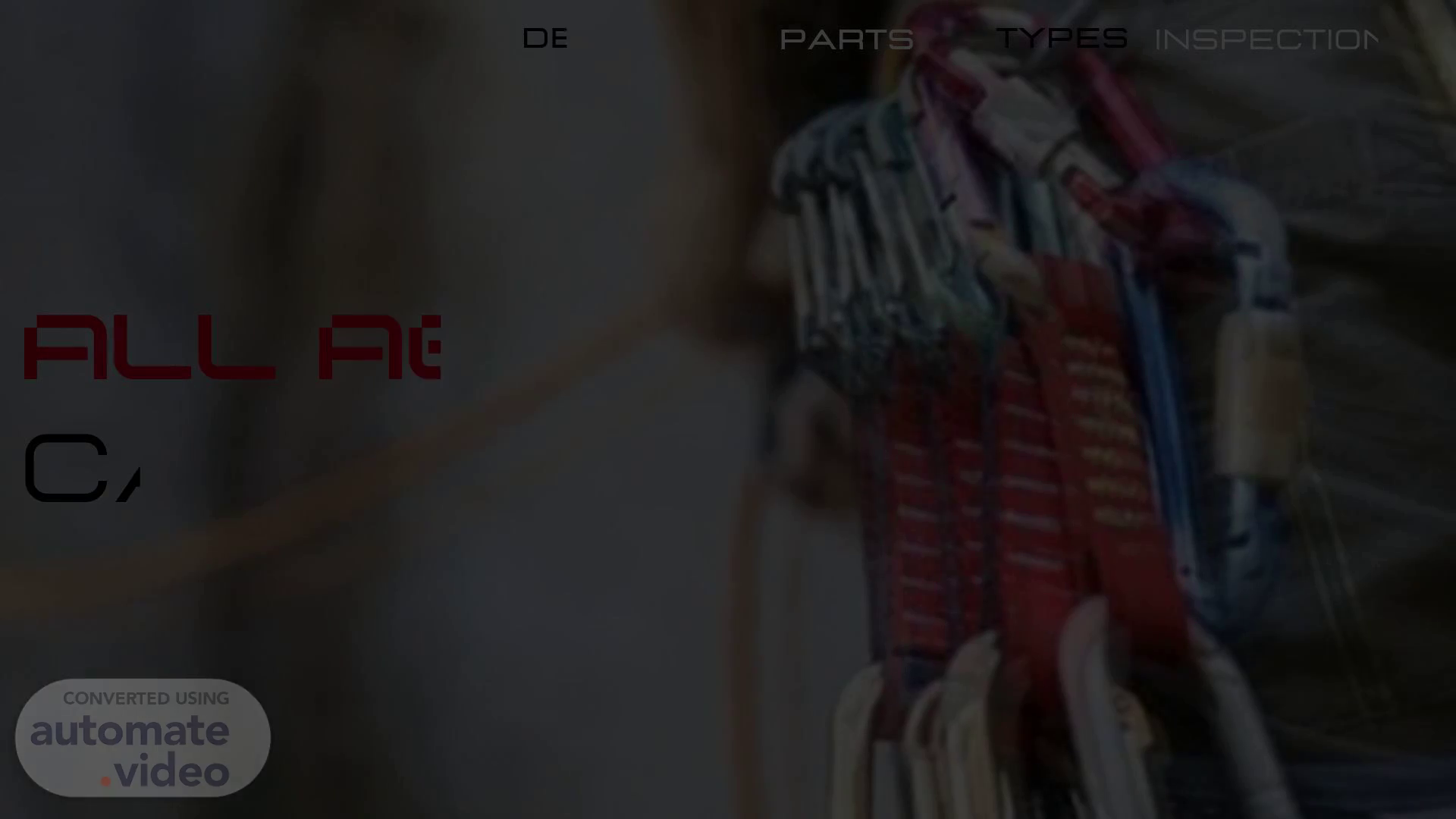Scene 1 (0s)
all about. By: bernie jay santos juma okemwa. CARABINER.
Scene 2 (12s)
[Audio] Definition and use of Carabiner Able to Identify the parts of Carabiner To know the types of Carabiner Inspection / Checking Procedure of carabiner.
Scene 3 (25s)
[Audio] carabiner is a metal loop with a gate that is used to quickly connect components. Carabiners are designed for the fall protection industry, but they do have other life hacks we will cover in this guide..
Scene 4 (41s)
[Audio] Steel are the most popular used for rescue and industrial rigging. They are much more durable, stronger and heavier than aluminum carabiners. Aluminum are light and designed for recreational climbing or where weight is a factor ie: indoor and outdoor rock climbing..
Scene 6 (1m 10s)
Gate Open MBS is 7KN. Horizontal load MBS is 7KN.
Scene 7 (1m 22s)
[Audio] Fire Rescue Certifications For Carabiners Minimum breaking strength requirements and calculations for rescue carabiners used by N-F-P-A compliant agencies are set forth in National Fire Protection Association standard 1983-2017 edition Fire Service Life Safety Rope and Equipment. There are two classes of rescue carabiners: Technical Use and General Use. Technical use rescue carabiners have a minimum breaking strength of 27kN-gate closed, 7kN gate open, 7kN minor axis. General use rescue carabiners requirements are to have a minimum breaking strength of 40kN gate closed, 11kN gate open, 11kN minor axis..
Scene 8 (2m 9s)
types of carabiner.
Scene 9 (2m 18s)
[Audio] Non locking are ideal for quickdraws and racking carabiners, commonly used for rock climbers..
Scene 10 (2m 29s)
[Audio] wire gate A single piece of bent spring-steel wire forms the gate. Wire gate carabiners are significantly lighter than solid gates, with roughly the same strength solid gate The more traditional carabiner design, incorporating a solid metal gate with separate pin and spring mechanisms..
Scene 11 (2m 48s)
[Audio] locking type Locking carabiners have the same general shape as non-locking carabiners but have an additional mechanism securing the gate to prevent unintentional opening during use. These mechanisms may be either ("screw-lock"), ("twist-lock"), ("twin-gate") & ("Magnetron"), . Commonly use for belying and anchor.
Scene 12 (3m 11s)
[Audio] Oval This is the classic carabiner that has been around for years upon years. They are inexpensive and great for climbing. It should be noted they are weaker than other shapes because of the weight transfer between the spine and gate. ..
Scene 13 (3m 28s)
[Audio] d shape D-Shape Carabiners look like a capital, "D" and are very versatile. They move force away from the gate and toward the spine of the carabiner. They have a wider gate opening and are generally lighter than most carabiners..
Scene 14 (3m 45s)
[Audio] offset-d Offset D carabiners are sometimes referred to as asymmetrical or Modified-D carabiners. They are similar to D-Shape Carabiners except the design is exaggerated creating an even wider gate opening. They are the most popular design as they improve functionality due to it having a larger gate opening, lighter shape and stronger design...
Scene 15 (4m 8s)
[Audio] pear shape Wider and rounder shape at the top than offset-D's, and typically larger. Used for belaying with a munter hitch, and with some types of belay device.
Scene 16 (4m 23s)
inspection.
Scene 17 (4m 31s)
[Audio] Inspection prior and after each use and conduct a detailed inspection once every 6 months. Retire a carabiner immediately if it is cracked, excessively worn or has a gate that doesn't function properly. A carabiner that has been dropped a significant distance should also be retired (dropped carabiners can suffer damage but still appear intact)..
Scene 18 (4m 55s)
[Audio] How to check your carabiners: To recognize issues with your carabiners, it's important to do these checks regularly: Do you see any cracks, sharp edges or corrosion? Is there excessive wear, such as deep grooves caused by the rope? (Anodized color that's been rubbed off is not critical.) Are there loose, bent or missing rivets? Are there metal burrs? Does the gate open and close slowly or not work properly? Does the locking mechanism (if there is one) work properly?.
Scene 19 (5m 30s)
any question?.
